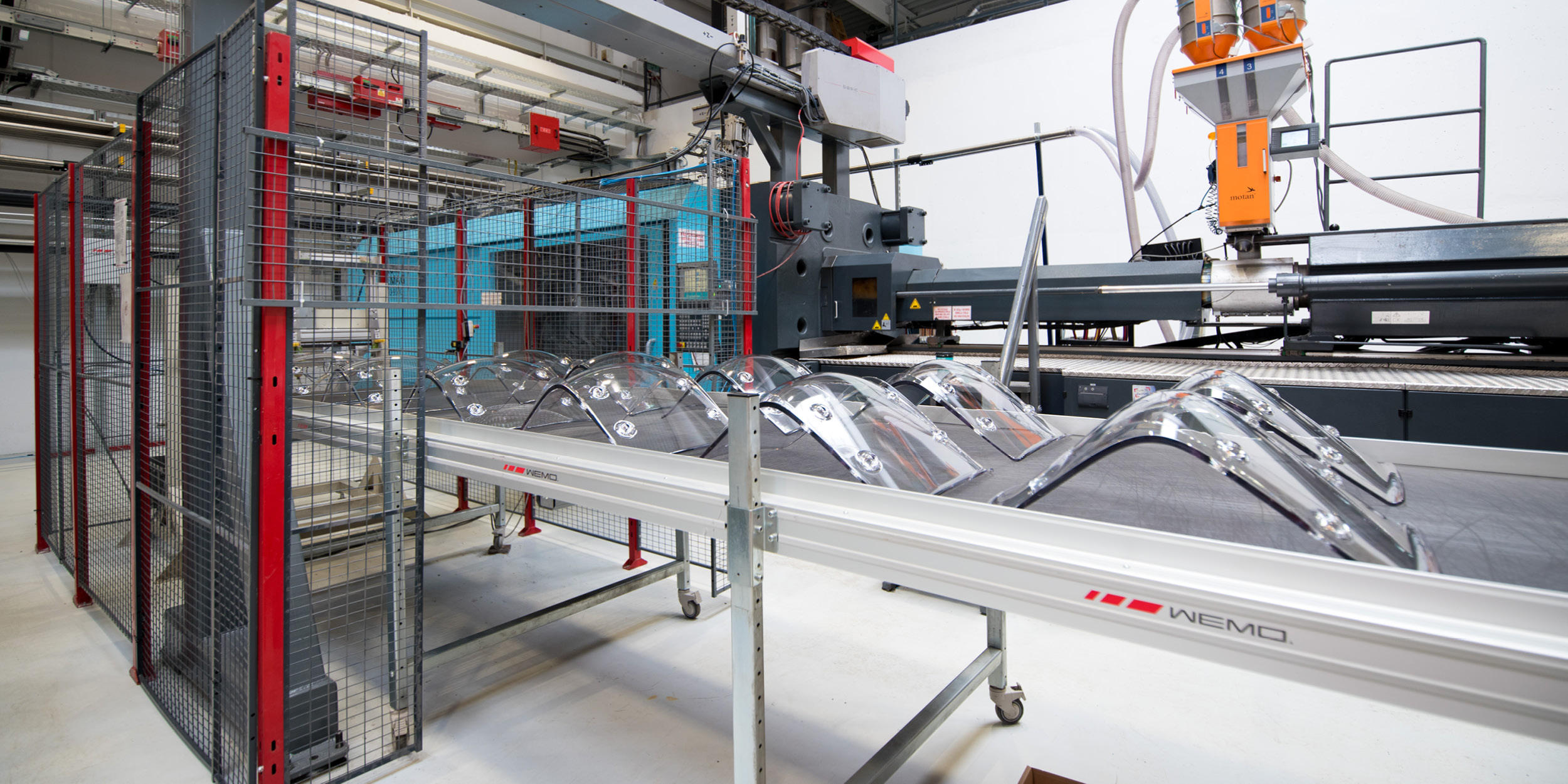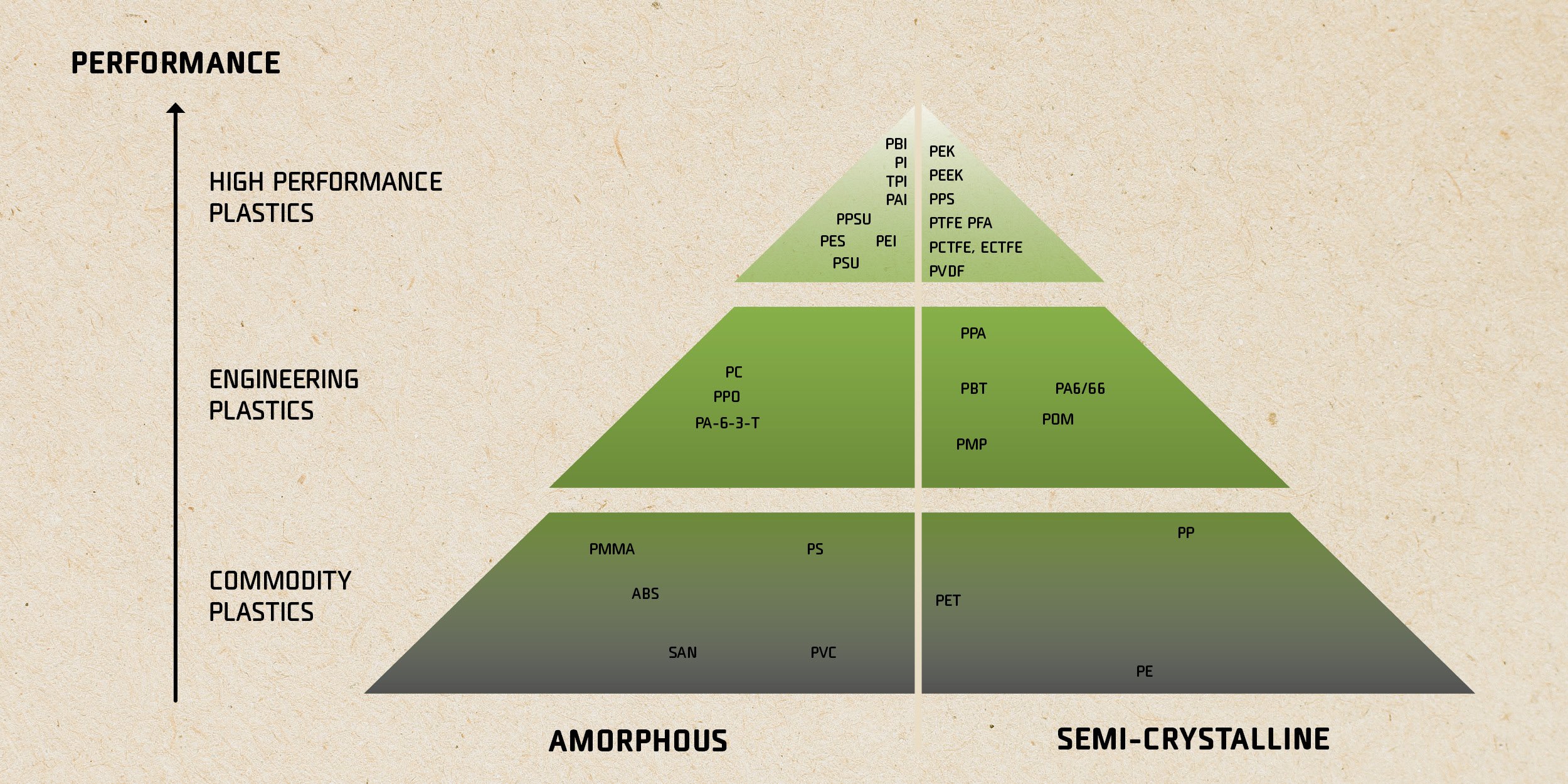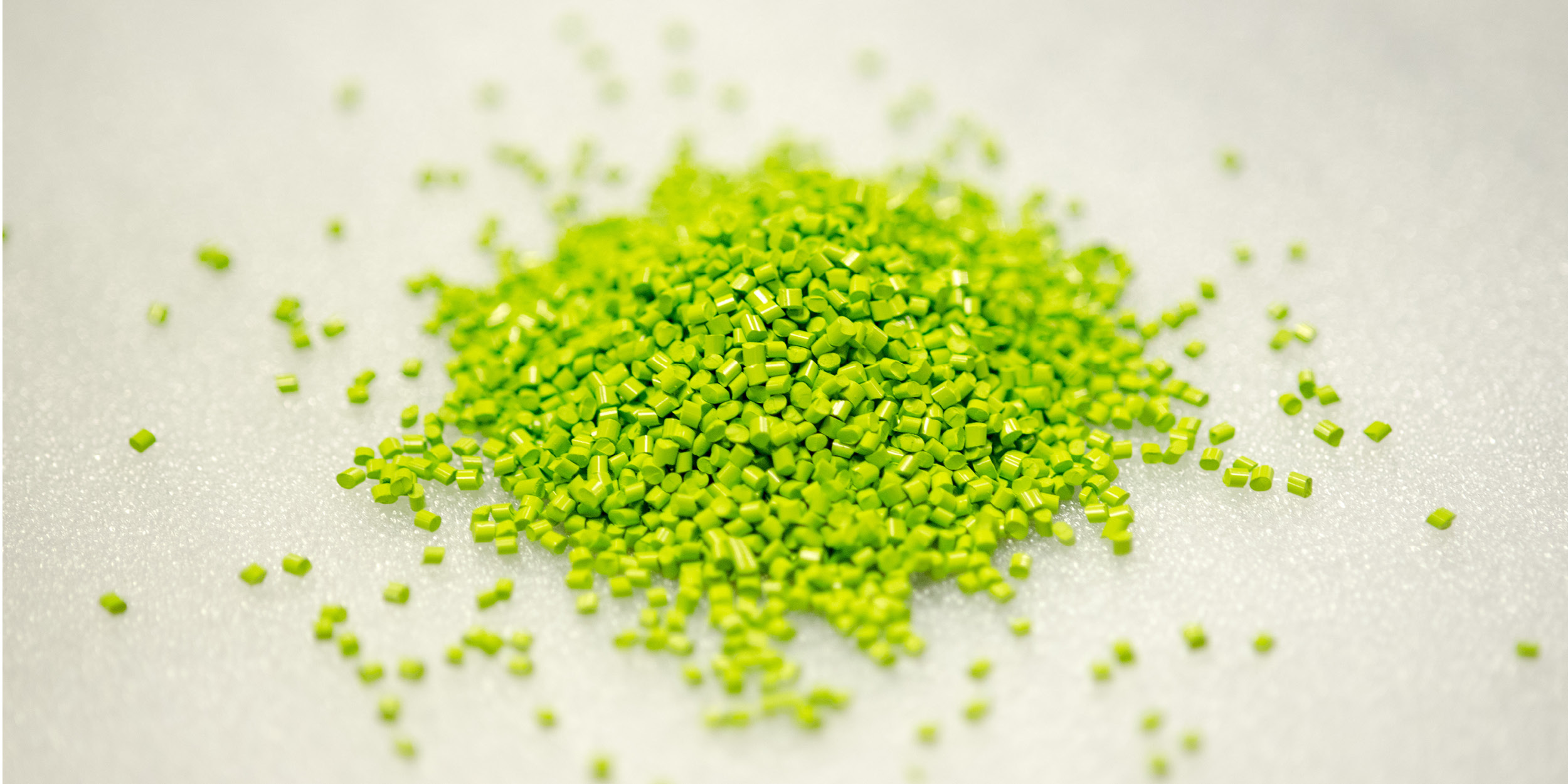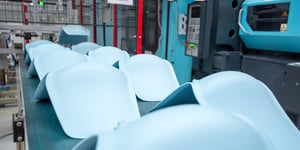There are many things to consider when choosing the best plastics for the production of an indoor furniture product. The first thing that needs to be determined is the type of polymer that will be used for the production of a specific component of the furniture product.
Download our e-book about the sustainable materials we use in our manufacturing process >>
There are three main categories of plastic materials to choose from: thermoplastics, thermosets and elastomers. Each group of materials provides specific characteristics regarding final properties as well as the production process.
Thermoplastics are polymers that can be melted and reshaped almost indefinitely, although after several cycles properties start to deteriorate due to degradation. Thermosets and elastomers are polymers obtained by irreversibly hardening liquid prepolymers, also known as resins.
Thermoplastics are the preferred choice for production of sustainable products, as they can be easily recycled into new materials after the end of life, and these new materials can then be used for the production of new products. Moreover, they also exhibit high toughness, which is often needed in indoor furniture applications.
On the other hand, products made with thermosets and elastomers can only be incinerated or landfilled. Both of these options are inferior to recycling in terms of sustainability. This is also one of the reasons that nowadays, the vast majority of indoor furniture products are produced from thermoplastic materials. Even when there is a need for a soft and highly flexible material, the conventional elastomers can be replaced with modern thermoplastics elastomers, which combine properties of thermoplastics (recyclability) and elastomers (low stiffness and hardness as well as high flexibility).

A Wide Variety of Options Helps Create the Perfect Indoor Furniture
When the initial decision on the main category of material is made, for example, thermoplastic, there are still numerous options to choose from. The famous thermoplastic pyramid classifies materials based on their morphology and performance. On the left side of the pyramid, there are amorphous polymers, which are characterized by their random structure, while on the right side, there are semi-crystalline polymers, which exhibit ordered structure.
The bottom of the pyramid contains commodity plastics, which are produced in high quantities, have low prices, but also low thermal stability and mechanical strength. Moving up in the pyramid you can find engineering plastics, which are higher in price, but also have significantly higher thermal resistance and mechanical strength. At the top of the pyramid, there are high-performance polymers. These materials have a very high price, but also exhibit astonishing thermal and mechanical performance, which is not needed in indoor furniture applications.
Use of Amorphous Plastics in Indoor Furniture Production
Amorphous plastics are generally transparent to light (with few exceptions) and have very low shrinkage, which makes them perfect for a product that requires tight dimensional tolerances. In indoor furniture applications, this class is especially used for products that have to be transparent.
Polystyrene (PS) and styrene-acrylonitrile (SAN) are transparent polymers with high brittleness; thus, they have only limited use in furniture applications due to lack of mechanical performance.
Polymethyl methacrylate (PMMA) can be used for transparent interior furniture products that require good mechanical performance and high light transparency, while polycarbonate (PC) is the best choice for interior furniture products that have to be transparent and very tough.
Acrylonitrile butadiene styrene (ABS) is an amorphous polymer, which is not transparent but is also widely used in indoor furniture products, due to its glossy surface combined with good scratch resistance.
Use of Semi-crystalline Plastics in Indoor Furniture Production
Semi-crystalline plastics are non-transparent and in general exhibit better mechanical performance (especially impact resistance) than amorphous plastics.
Polypropylene (PP) is one of the most widely used semi-crystalline plastics in indoor furniture applications as it provides high toughness and flexibility, combined with low price.
Polyamides (PA) are engineering plastics that are often used in applications that require excellent mechanical performance, such as high toughness and strength.
For most demanding structural applications, where very high stiffness and strength are needed, fiber reinforced plastics (FRP), such as glass fiber reinforced PP or PA, are usually employed.

Using Recycled Plastics for Production of Indoor Furniture
In recent years, there has been an increasing demand for more sustainable products due to the high environmental awareness of the consumers and the interior furniture sector is not an exception. Implementation of recycled materials not only reduces the price of the end product but also results in a better environmental footprint of the final product.
At Plastika Skaza, we are using recycled materials in many furniture applications, such as plastic chairs, kitchen legs, waste sorting solutions, etc. As explained above, different products require different materials, and that is why we are using a broad scope of recycled materials that range from PS, PP and PA to FRPs.
These products currently contain at least 30% of recycled materials, but we are constantly striving to increase the content of recycled materials in our products to even higher levels, thus creating even more sustainable indoor furniture products.

Let Us Help You Select the Best Plastics for Your Indoor Furniture
With many different types of plastic materials available, choosing the right material for indoor furniture products seems like an overwhelming task, especially as all aforementioned plastics types come in many different grades that further range in properties.
At Plastika Skaza, we have more than 40 years of experience in the production of plastic products, which enables us to efficiently choose the best material for a specific product. Our technical team can help you not only with the material choice but also offer a holistic solution for your indoor furniture product, ranging from the idea and concept, prototyping and testing, product optimization and all the way to the final production.
Contact us for further details and let us help you select the best plastics for your indoor furniture.
Find out more about how we incorporate sustainable materials into our production process. Fill in the form and download the e-book with educational content.

